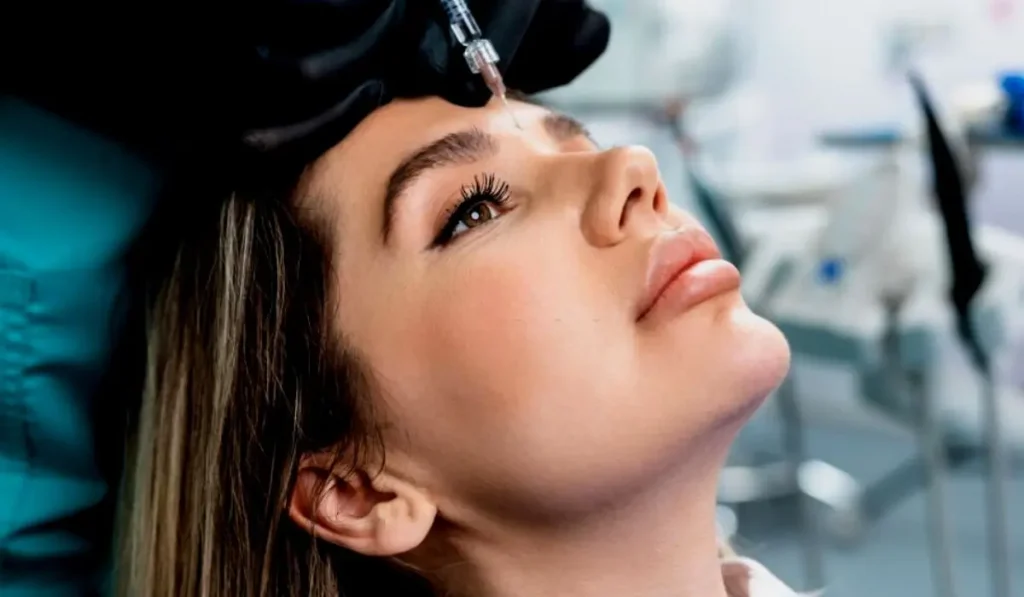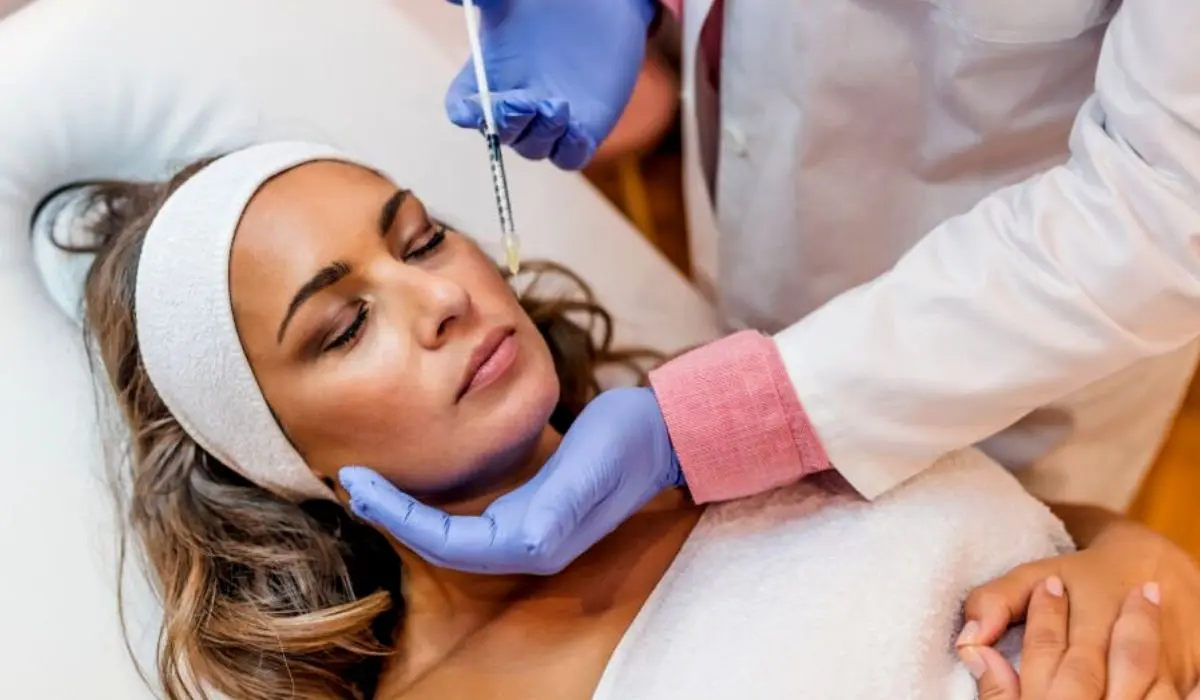Botox injections are a popular cosmetic treatment used to smooth facial wrinkles and lines. But many wonder – what exactly does Botox do to your face? Botox contains botulinum toxin that relaxes underlying facial muscles to soften wrinkles and prevent new ones from forming.
The treatment process involves carefully administering small injections to targeted areas on the upper face.
While results are not immediate, over the next week the wrinkle-smoothing effects will gradually become noticeable as the Botox takes effect.
There may be some mild side effects like temporary soreness, swelling, or bruising where injected. When properly done, however, Botox can rejuvenate facial appearance with minimal discomfort or downtime.
What Is Botox Treatment For Face? How Is It Used?
Botox contains purified botulinum toxin that temporarily paralyzes facial muscles, preventing them from contracting. This smoothing out of underlying muscles softens and reduces the appearance of fine lines and wrinkles on the skin surface.

Botox is typically used cosmetically on wrinkles around the eyes, forehead, and mouth. It has medical applications as well for conditions like excessive sweating. Effects of each Botox treatment last 3-4 months on average.
What Will Happen To Your Face While Undergoing Treatment?
Here’s an overview of what you can expect during your Botox appointment:
◼ The provider will clean and mark injection points on the target areas of your face – common areas are crow’s feet, forehead, and frown lines.
◼ Superficial numbing cream may be applied first for added comfort.
◼ The Botox will then be carefully injected in very small doses into the marked facial muscles using a fine needle.
◼ Discomfort is usually minimal – you may feel a quick pinching sensation with each injection.
◼ Ice packs are often applied afterward to reduce any swelling and redness at injection sites.
◼ Your face may feel tight or look somewhat frozen for the first few days before results appear.
Different Types Of Botox Treatment For Face
There are a few different formulations of Botox used for the cosmetic treatment of facial wrinkles. The type used depends on the area of the face being treated and the depth of wrinkles. Common varieties include:
◼ Botox Classic/Botox Cosmetic – This is the original Botox formula first approved by the FDA in 2002 for treating moderate to severe frown lines between the eyebrows. Botox Cosmetic contains botulinum toxin type A and is the most widely used formula for smoothing forehead wrinkles and expression lines.
◼ Botox Azzalure – Also known as Dysport, this is a modified version of botulinum toxin A. It contains less active complex proteins. Botox Azzalure diffuses faster and over a wider area than Botox Classic. This makes it well-suited for diminishing delicate crow’s feet wrinkles around the eyes and fine vertical lip lines.
◼ Botox Lyft – A newer neurotoxin formula containing highly purified botulinum toxin A. It helps lift and correct drooping brows and smooth wrinkles on upper eyelids. Botox Lyft is also used to slim jaw and neck contours.
◼ Xeomin – Made with isolated botulinum toxin that does not contain added proteins. This allows it to be readily absorbed by the body. Xeomin is FDA-approved for temporary improvement of frown lines, crow’s feet, and forehead creases.
◼ Jeuveau – This formulation uses a proprietary strain of botulinum toxin called PrabotulinumtoxinA. Jeuveau targets wrinkles between the eyebrows and is the newest neurotoxin approved by the FDA.
Along with these brand name options, some providers may use generic formulations of botulinum toxins.
The right Botox type for your treatment plan depends on factors like the area being treated, the extent of wrinkles, and desired outcome. Your provider can help determine which is appropriate.
Ingredients Used In Making Botox Treatment For Face
Botox products contain:
◼ Botulinum toxin – The active muscle-relaxing ingredient derived from bacteria.
◼ Human albumin – A protein that stabilizes the botulinum.
◼ Sodium chloride – Added salt content to maintain proper osmotic pressure.
◼ Preservatives like benzyl alcohol.
Symptoms Of Using Botox Treatment For Face
Some people may experience temporary adverse effects like:
◼ Mild pain, swelling, and redness at the injection sites
◼ Minor headache
◼ Superficial bruising under the skin
◼ A feeling of tightness in the face
◼ Slight eyelid drooping
◼ Asymmetric or crooked smile
◼ Risk of viral infection at injection sites
Related:- Botox Treatment For Hair – Is It Good For Use Frequently?
Benefits Of Using Botox Treatment For Face
When properly administered, Botox offers cosmetic enhancement by:
◼ Smoothing out fine lines and wrinkles on the forehead, crow’s feet, frown lines
◼ Preventing the formation of new wrinkles
◼ Lifting and slimming the lower face
◼ Reducing skin imperfections
◼ Tightening sagging jawlines and neck
◼ Renewing an aging, tired facial appearance
◼ Boosting self-confidence in one’s looks
Precautions & Tips While Using Face Botox Treatment
◼ Do not manipulate your face or rub the treated areas for at least 4 hours after injections.
◼ Avoid facials, chemical peels, laser treatments, and microdermabrasion for 1-2 weeks post-treatment.
◼ Stay upright and avoid vigorous exercise for the rest of the day.
◼ Expect to notice results in 2-10 days as the Botox gradually begins working.
◼ Return for follow-up appointments if touch-ups or additional units are needed for a desired aesthetic outcome.
◼ Use SPF 30+ sunscreen to protect skin and maintain Botox results.
Conclusion
While Botox does not produce dramatic instant changes, within about a week you can expect to see wrinkles and fine lines begin to smooth out as the botulinum toxin takes effect. Mild side effects are common.
When administered properly, Botox can safely and effectively rejuvenate aging skin of the face and neck. Just be sure to take necessary post-care precautions to allow Botox to work its wrinkle-relaxing magic.
Read More:- How To Use A Gua Sha Tool On Face? What Are The Benefits?
FAQs
Q: How long does it take to see results after a Botox treatment?
A: Most patients see the full effects of Botox within 7-14 days after injections.
Q: Is there a lot of pain during Botox injections?
A: There is only mild pain from the needle injection, usually described as a quick pinch. Numbing cream can provide comfort.
Q: What is the longest Botox results can last?
A: In some individuals, Botox results may persist up to 6 months, but the average is 3-4 months.
Q: Can Botox remove deep wrinkles?
A: Botox works best on fine, dynamic lines vs deep wrinkles. Filler injections are better for deeply set wrinkles.
Q: How old should you be to get Botox?
A: Botox can be safely performed on patients 18-65 years old. Younger patients may be considered on a case-by-case basis.

